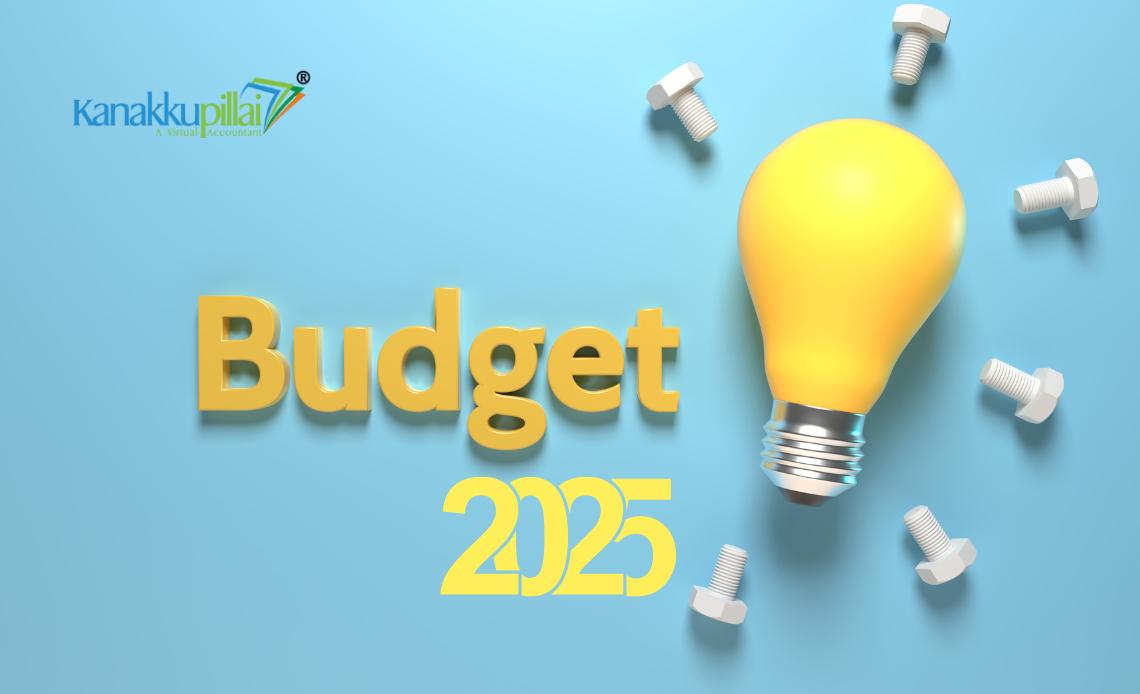Finance Minister Nirmala Sitharaman delivered the Union Budget 2025-26 by labelling it as the fundamental document for advancing the economy along with social programs and technological advancements. The government budget focuses keenly on agriculture development together with infrastructure expansion, provides tax breaks to citizens, and pushes digital transformation efforts alongside defence modernization programs, space exploration missions and cyber security improvements. The significant budget provisions improve farmer access to credit while offering tax relief to middle-class citizens, setting new records in healthcare and education funding, and promoting innovation and manufacturing initiatives. This year’s budget includes the most important points that stand out.
Union Budget 2025-26: (Key Highlights from the Union Budget 2025-26)
1. Agriculture & Rural Development
- Prime Minister Dhan-Dhaanya Krishi Yojana aims to cover 100 districts efficiently in the areas of agriculture productivity, irrigation, storage and providing farmers access to credit, especially targeting small and marginal farmers. The program takes steps to combine contemporary farming practices that will sustain agricultural development.
- The government launched a six-year domestic pulses independence program called Mission for Aatmanirbhar Bharat in Pulses, which would decrease imports while stabilizing farmer prices for Tur, Urad, and Masoor dal.
- The Comprehensive Programme for Vegetables & Fruits delivers three essential objectives: it improves production levels, it strengthens supply lines and it creates farmer-friendly market prices while minimizing wastage and increasing exports.
- The five-year Mission for Cotton Productivity uses scientific research, biotechnology and precise farming to boost cotton yields, which supports the textile manufacturing industry’s competitiveness.
- The Kisan Credit Card (KCC) Loan Limit Received an Increase – The restrictions on loans to farmers were raised from Rs.3 lakh to Rs.5 lakh for farmers alongside fishermen and dairy farmers, which enhanced their financial stability and credit availability.
- The new Urea Plant in Assam will annually produce 12.7 lakh metric tons for use within the nation, which reduces both import costs and makes fertilizer more available to local farmers.
2. Healthcare
- The medical college expansion plan targets 75,000 educational seats through 10,000 additional UG/PG slots during 2025-26 to establish proper doctor distribution nationwide with a focus on rural health care.
- Day Care Cancer Centres will establish 200 facilities across District Hospitals during 2025-26 and plan to expand coverage to all districts within three years to deliver better cancer detection and treatment in the local area.
- Social Security for Gig Workers consists of providing identity cards along with e-Shram portal enrolment and PM Jan Arogya Yojana health benefits which establishes formal recognition and benefits for those working in the gig economy.
- Through the partnership of private medical operators and the “Heal in India” plan, India seeks to establish itself as an international healthcare destination while developing specialized healthcare facilities across major medical locations.
- All rural Primary Health Centres will get broadband access through BharatNet to use telemedicine services alongside specialists for real-time consultations.
3. Education & Skilling
- Atal Tinkering Labs will receive support to build 50,000 new laboratories within five years in government schools with the goal of advancing STEM education through grassroots innovation and problem-solving.
- Bharatiya Bhasha Pustak Scheme presents digital books across Indian languages for schools along with higher education to guarantee inclusive learning and maintain linguistic multiplicity.
- The five National Centres of Excellence for Skilling focus on industrial collaboration, which delivers specialized manufacturing training to close talent deficiencies and offer curricula based on industrial needs.
- The expansion of IITs will enable the admission of 6,500 additional students through additional hostel facilities at IIT Patna, which address the growing technical education needs.
- The Rs.500 crore budget supports the establishment of a Centre of Excellence in AI for Education to develop advanced education research and technology integration in learning systems, adaptive learning models, and innovative digital education approaches.
4. Technology and Innovation
- The National Geospatial Mission completes three core objectives through the modernization of land records as well as urban planning and infrastructure design and administration while enhancing land transaction transparency.
- Deep Tech Fund of Funds (Rs.10,000 crore) provides financial backing to AI biotech and space technology startups for conducting research into superior high-impact innovations.
- The PM Research Fellowship will deliver ten thousand fellowships to IITs and IISc with increased financial backing to stimulate research-based technological innovation aiming to build indigenous technology capabilities.
- A second gene bank called Gene Bank for Crop Germplasm will conserve 10 lakh plant varieties for sustaining food security sustaining biodiversity, and supporting climate-resilient agriculture.
- A budget of Rs.20,000 crore has been dedicated to building Small Modular Reactors (SMRs) through the nuclear energy expansion project for achieving 100 GW nuclear energy generation by 2047 while enhancing energy security and reducing dependence on fossil fuels.
- The Gyan Bharatam Mission works to digitize more than 1 crore historical manuscripts so cultural preservation can occur while historical knowledge becomes available to everyone.
5. Infrastructure & Urban Development
- The Urban Challenge Fund (Rs.1 lakh crore) works to develop cities into growth centres through redevelopment initiatives combined with water management and sanitation projects and improved urban living quality and sustainability goals.
- The government grants states interest-free loans for fifty years to finance capital infrastructure projects at Rs.1.5 lakh crore to support transportation and housing development as well as smart cities.
- The Government expanded Jal Jeevan Mission operations through 2028 to achieve 100% rural tap water provision, which serves the dual purposes of advancing public health while preventing diseases and maintaining proper hygiene practices.
- The government will merge with private partners through Public-Private Partnership (PPP) in Infrastructure to create a three-year investment framework which optimizes infrastructure development.
- The Asset Monetization Plan (Rs.10 lakh crore, 2025-30) allows the government to transform existing infrastructure by selling assets, thereby enabling funding for new projects, which simultaneously stimulate economic growth and extract maximum value from current infrastructure.
- The UDAN Regional Connectivity Scheme expands its service scope to 120 new destinations as the government aims to transport four crore passengers in 10 years to strengthen both air connectivity and tourist development throughout regional areas.
- Greenfield Airport in Bihar – To supplement Patna and Bihta airports, facilitating economic growth, trade, and employment opportunities.
Union Budget 2025-26 || New Income Tax Slabs
Zero income tax till 12 lakh under the new tax regime. 12.75 lakh for salaries taxpayers with a standard deduction of 75,000
| Income Range (₹) | Tax Rate |
| 0 – 4 lakh | Nil (0%) |
| 4 – 8 lakh | 5% |
| 8 – 12 lakh | 10% |
| 12 – 16 lakh | 15% |
| 16 – 20 lakh | 20% |
| 20 – 24 lakh | 25% |
| Above 24 lakh | 30% |
- Higher Exemptions for Senior Citizens – The financial relief for senior citizens increased after the government expanded senior citizen interest income tax exemptions from Rs.50,000 to Rs.1 lakh.
- Higher TDS Exemption for Rent – The new policy for rental income tax presents two important changes by raising the TDS exception threshold from Rs.2.4 lakh to Rs.6 lakh which helps both renters and supports the development of affordable housing opportunities.
- Extended Window for Updated Return Filing – Taxpayers now have four years (instead of two) to correct filings, reducing compliance burdens and encouraging voluntary compliance.
Important Budget Announcements 2025
| Sector | Announcement | Details/Comments |
| Income Tax | Revised tax structure | – Earnings up to ₹12 lakh: Exempt from tax – ₹8-12 lakh: 10% tax – ₹12-16 lakh: 15% tax – ₹16-20 lakh: 20% tax – ₹20-25 lakh: 25% tax – Above ₹25 lakh: 30% tax |
| Increased TDS threshold on rent | Annual exemption cap raised from ₹2.4 lakh to ₹6 lakh | |
| Higher tax deduction for senior citizens | The deduction limit doubled to ₹1 lakh | |
| Relief for salaried individuals | No tax is applicable for income up to ₹12.75 lakh | |
| Tax exemption on lower-income groups | Earnings up to ₹4 lakh taxed at 0% under the new regime | |
| Start-ups | Extended benefits | Incentives for start-ups to continue for five years from inception |
| Banking/Insurance | Rural credit score system | To be implemented for financial inclusion in villages |
| Increased FDI cap in insurance | Foreign Direct Investment (FDI) limit raised to 100% | |
| Housing | Housing development fund | ₹15,000 crore allocated to complete one lakh housing units |
| Agriculture | Self-sufficiency in oilseed production | Six-year initiative launched to boost domestic output |
| Cotton yield enhancement program | Five-year initiative for improving cotton productivity | |
| Higher credit limit under KCC | Kisan Credit Card loan ceiling increased from ₹3 lakh to ₹5 lakh | |
| Education | Expansion of Atal Tinkering Labs | To be introduced in more schools to promote innovation |
| Internet access for schools | Broadband connectivity for government secondary schools | |
| Infrastructure upgrade for IITs | Additional facilities to increase student intake: IIT Patna to be expanded | |
| Healthcare | Daycare cancer treatment centres | To be established in all district hospitals; 200 centres planned by fiscal 2026 |
| Tax benefits on essential medicines | 5% duty on six critical medicines; 36 drugs exempted from basic customs duty | |
| Growth | Enhanced MSME credit guarantees | Maximum coverage increased from ₹5 crore to ₹10 crore |
| Infrastructure | PPP model for new projects | Three-year projects can be executed through Public-Private Partnership (PPP) |
| Interest-free funding for states | ₹1.5 lakh crore allocated for state-led infrastructure improvements | |
| Expansion of regional airports | Over 100 new regional airports are planned within the next decade | |
| UDAN 2.0 initiative | 120 new airports to be developed, with a special focus on Northeast and Bihar | |
| Excise/Customs Duty | Export credit accessibility program | Simplified process for exporters to obtain credit |
| Tariff rate rationalization | Proposal to eliminate seven tariff categories, retaining eight | |
| Economy | Investment competitiveness index | Designed to encourage healthy competition among states |
| Fiscal deficit target revision | New fiscal deficit target set at 4.8% for FY 2025 | |
| Increased capital spending | Capital expenditure budgeted at ₹10.18 lakh crore | |
| Women’s Development | Business loans for women entrepreneurs | Up to ₹2 crore available for first-time women entrepreneurs from SC/ST and backward communities |
| Rural India | Enhanced nutrition support | Benefits for over eight crore children and one crore lactating mothers |
| Make in India | National Manufacturing Strategy | Policy support and monitoring framework introduced |
| Green technology production initiative | New program launched to promote clean technology | |
| Nuclear Research & Development | Dedicated mission focused on nuclear energy advancements | |
| Water Management | Jal Jeevan Mission Extension | The program was extended until 2028 to ensure water availability |
| Technology | AI Centre of Excellence | ₹500 crore allocated to establish AI research hubs |
| Boost to EV battery production | Additional capital investment in electric vehicle battery manufacturing | |
| Tourism | Visa fee exemptions | Waivers introduced for select tourist categories |
Conclusion
The 2025-26 Union Budget implements strategic policies that drive structural reforms in core sectors along with financial support. This budget strategy covers public infrastructure development and economic progress as well as social welfare improvements through detailed execution schedules until 2026. A part of the budget includes state government-specific regional projects which combine with manufacturing and technological development incentives for industries. The updated tax structure, combined with better loan possibilities and expanded welfare initiatives, will stimulate sustainable growth by advancing development in cities and villages simultaneously.





